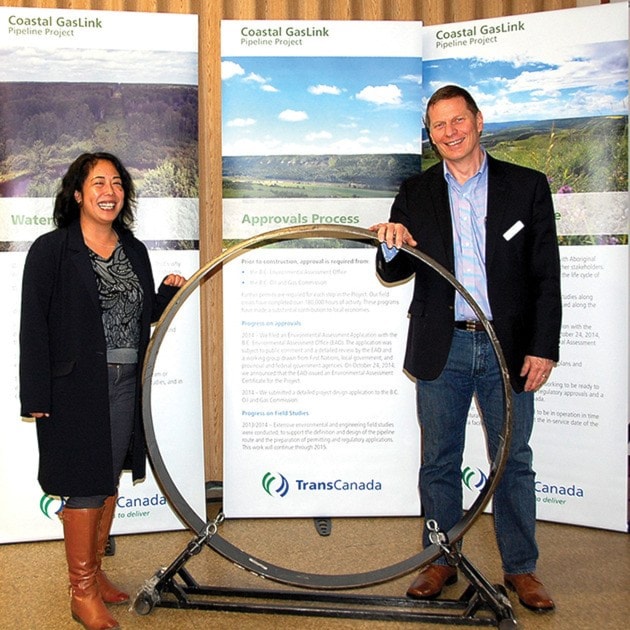Coastal GasLink does aerial and detailed internal inspections to ensure pipeline safety.
Over 25 Houston residents attended the Coastal GasLink Open House in Houston last Monday.
Coastal GasLink is a natural gas pipeline proposed by TransCanada to run from Dawson Creek to Kitimat.
Jaimie Harding, Community Relations lead for Coastal GasLink, says the pipeline is very safe.
"If there is an incident, it is a gas, and it will evaporate into the air," she said.
Project Director Greg Cano agreed.
"What we are going to have in our pipeline is the same stuff that goes into homes, furnaces, stoves, across the country," he said.
He says the only difference is natural gas in homes is required to have an odourant so it can be detected. In the pipelines, it will not have that odourant.
Cano says there are 100 people working on the Coastal GasLink pipeline project and their focus is safety.
"The key in everything we do is safety. That is the number one priority," he said.
PIPELINE SAFETY
Coastal GasLink will keep 10 metres above the pipeline clear after it is in the ground and will do aerial surveys three or four times a year, said Project Director Greg Cano.
Aerial surveys will have very sensitive technology to detect gases and potential leaks.
It will also look for issues like washouts or landslides that could impact the pipeline, Cano said.
He says a more detailed inspection will be done every three or four years by Smart PIGS.
A Smart PIG is an instrument that goes inside the pipeline and inspects the full length from the inside.
It will detect the very smallest incident long before it might cause a problem, Cano said.
ENVIRONMENT IMPACT
Coastal GasLink wants to minimize environmental impact by running close to other pipelines.
Project Director Greg Cano says they followed the route of the Pacific Trails pipeline quite closely, but deviated where they had to.
"We tried as much as possible to follow pipelines that were proposed to go before us," Cano said.
"That was one of the first things in our route selection."
Cano says Coastal GasLink wants to protect salmon and streams, and will choose how to cross streams based on environmental studies.
They will chose out of three options method for each stream crossing from three options.
1. Open cut, where they excavate a ditch across a waterway during a time when it is fully frozen or seasonally dry.
2. Isolated open cut, water redirected while they put in a ditch and pipeline.
3. Horizontal drilling, where they install the pipeline under the stream without making a ditch through the stream bed.
PROMISE NO OIL
Coastal GasLink has no intention of converting their natural gas pipeline to oil, said Cano.
They have signed contracts with First Nations along the pipeline route promising their pipeline will not change over to carry oil, he said.
The B.C. government also passed regulation in January to keep natural gas pipelines from converting to carry oil.
DIRECT CONTACT
Cano says members of the public will have direct contact to Coastal GasLink staff.
While the prime contractors are on the field constructing the pipeline, Cano says several 100 TransCanada employees will be working with them.
"We don't just give the contractors a cheque and tell them call us when it's ready," Cano said.
"We monitor them every step of the way."
"When anyone local has an issue, they won't have to deal with the prime contractor. They will be dealing directly with TransCanada people."
